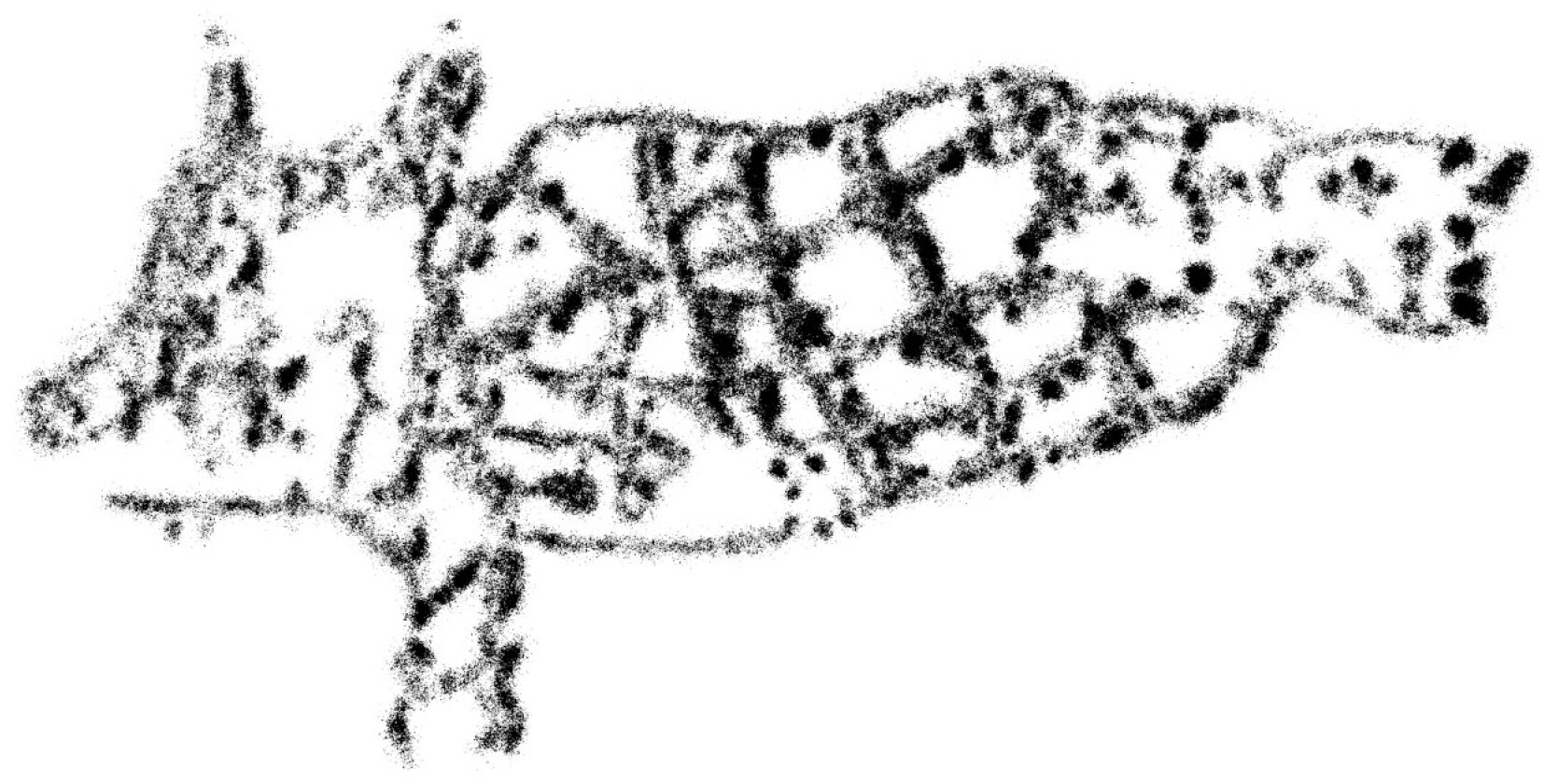The first-ever example of an ancient Egyptian petroglyph depicting a zodiac sign has been discovered at a rock art site on the western bank of the Nile. Consisting of a crudely engraved creature with the head of a goat and the body of a fish, the image has been identified as Capricornus, the mythological figure representing the constellation Capricorn.
“The goat-fish was found in a locality of el-Hosh, which hosts a large number of petroglyphs and texts, much of it Predynastic, but also material from the Graeco-Roman and Islamic periods,” explained Dr Frederick Hardtke – who discovered the petroglyph – to Phys.org. “The goat-fish was found adjacent to another extremely unusual image of what we believe to be a chameleon. These two taken together make the panel that they are on rather enigmatic.”
Describing the ancient artwork in a new study, Hardtke and his colleagues state, “The petroglyph appears to depict the head of a mammal, with two ears or horns positioned on its crown and a small beard at its chin, to which is attached a scaled, fish-like torso with a fanned tail, and from which extend one, or possibly two, short legs.”

An outline of the petroglyph resembling Capricornus.
“These combined features correspond closely to those of Capricornus,” continue the authors, who go on to explain that zodiac signs are “otherwise absent from the known corpus of Egyptian petroglyphs.”
Reviewing the symbol’s history, the researchers note that the appearance of a goat-fish hybrid first occurs in Mesopotamian iconography around 2112 BCE. Adopted by the Sumerians and Akkadians, the figure represented the god Enki – also known as Ea – who was seen as a manifestation of the constellation Capricorn.
However, astrology wasn’t adopted in ancient Egypt until the very end of the Ptolemaic Period in the first century BCE, when the signs of the zodiac were painted onto the ceiling of the temple of Montu and Rattawy at Armant, as well as the temple of Hathor at Dendera. Probably introduced by the Greeks or Romans, this sudden interest in star signs resulted in the widespread production of horoscopes for elite and non-elite Egyptians alike throughout the Graeco-Roman Period.
The study authors therefore speculate that while the petroglyph could represent the constellation of Capricorn itself – which was visible in the autumn night sky and would have been used by desert tribes for navigation – it more likely depicts the zodiac sign, which the artist would no doubt have been familiar with.
Given the rudimentary nature of the image, the researchers suspect that it was probably drawn from memory, and that the engraver had presumably seen the symbol on temples, tombs, or coins. Based on the history of astrology in ancient Egypt, they go on to conclude that it was almost certainly produced between the first century BCE and the end of the first century CE.
“We are confident that the petroglyph depicts Capricornus and that it was most likely produced during the Graeco-Roman Period,” they write.
The study is been published in The Journal of Egyptian Archaeology.
[H/T: Phys.org]
Source Link: Goat-Fish Carving Is First-Ever Zodiac Symbol In Egyptian Rock Art